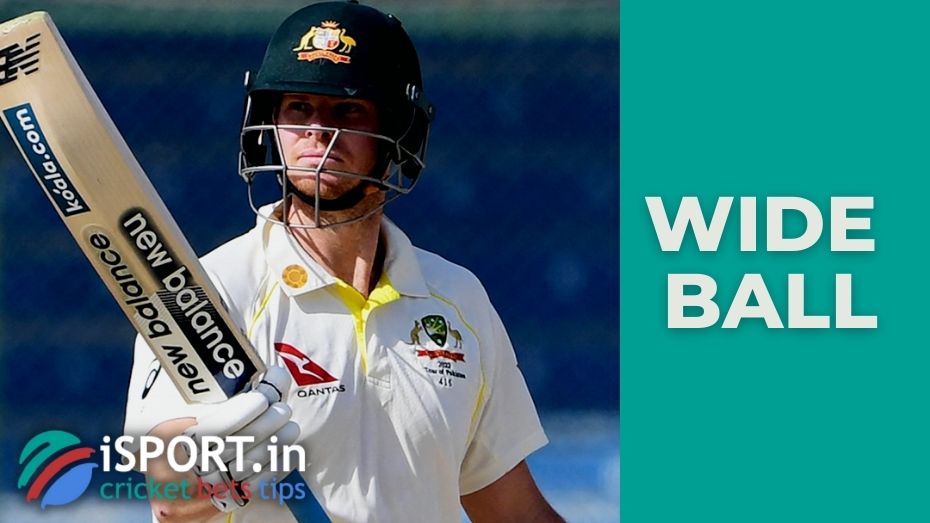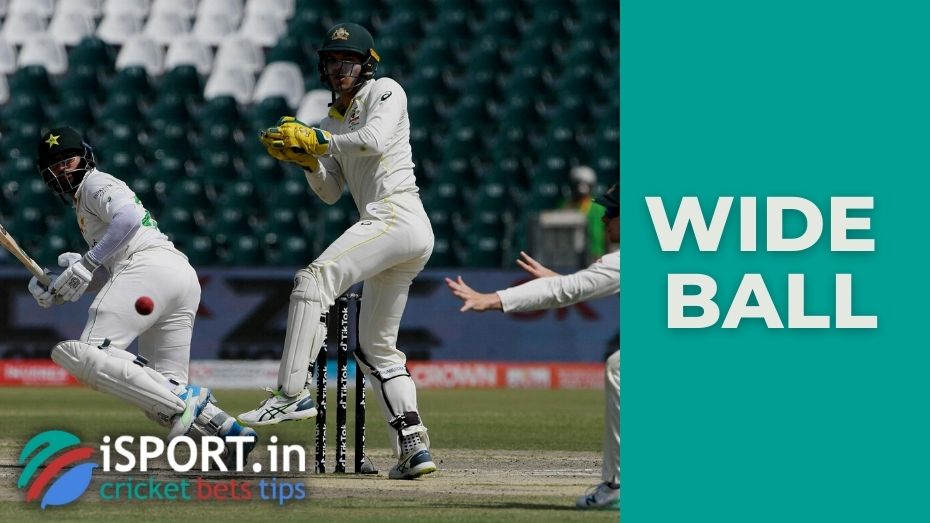Wide in cricket – what is it?

In cricket, the term wide or wide ball refers to the bowler’s serve when the ball passes so far from the batsman that it is impossible to hit it. This is a violation of the rules and leads to the fact that the batting team is awarded one point.
What is a wide ball in cricket?
In cricket, this term can have two meanings:
- This may be the name of a ball delivered by a bowler in violation of the rules, which, in the umpire’s opinion, was sent so far away from the wicket that the batsman could not hit it with a normal blow.
- An additional run received by the team in whose direction the offending pitch was made, which does not allow the batsman to hit the ball.
An important characteristic for determining whether there has been a violation of the pitch rules is the judge’s assessment of whether the batsman could hit the ball while in the normal position of the defender. Controversial moments also arise when the batsman moves.
For the actual application of the rules, the wide ball Laws of Cricket gives the following instructions:
- If a bowler delivers a ball that cannot be recognized as a No ball, the match referee recognizes it as wide if the ball flew past the batsman standing in a normal position, as well as if the ball would have flown past the batsman standing in a normal position. In this case, the usual position means the player’s position when he does not move relative to the wicket either to the right or to the left while the ball is flying at him, and he hits on a middle or middle-leg stump guard.
- The ball is recognized as wide if it is impossible to hit it with the bat using a conventional strike used in cricket.
The referee uses several grounds to determine whether a wide ball took place:
- The pitch is judged relative to the batsman’s position, not relative to the location of the wicket.
- The easiest way to determine whether a violation has occurred and whether a wide ball can be declared is to evaluate whether the ball has passed by the wide lines (lines that are parallel to the return crease). These lines are located at a distance of 0.89 meters from the central column of the gate.
- The situation is different if the batsman is not in the usual position. If the batsman moves to the leg side, the referee will announce the wide ball if the ball flies to the side (wider) than the wide ball line outside the off-stump, even though the batsman moves to the leg side.
- If the ball is served towards the leg stump and the batsman has also moved towards the leg side, the wide ball will be declared if the bowler has served the ball much to the right or left (wider) than the batsman’s movement. But there will be no violation if it hits between the batsman’s legs or hits the space between the batsman and the wicket. In this case, the wide ball will not be declared even if the ball actually flies outside the limits indicated by the wide line.
A wide ball is declared not only if the ball goes outside off stump or the leg stump. A violation is also declared if the ball flies much higher than the batsman’s head and cannot be hit from the usual position. This situation should be distinguished from No-Ball. The difference is that the wide ball is always out of the player’s reach.

What situations are not Wide ball?
In addition to the list of situations in which the judge must establish this violation, there is also a list of cases that exclude wide ball:
- The batsman touches the bat, part of the body or part of the equipment of the ball. The logic of applying this exception is simple: if contact with the ball is possible, then, in theory, it could be repelled.
- The bowler serves so that a wide ball could happen, but it does not reach the batsman. This situation is also a violation, but it is not a wide ball.
- If the batsman moves during the pitch in such a way that he has the opportunity to hit the ball.
- The ball is located within the boundaries outlined by the wide lines.
For each case of the wide ball, the batting team receives one run as compensation for the violation committed by the opponent. In addition, the rules of cricket do not restrict batsmen from earning runs in the usual manner when playing wide ball if there is such an opportunity.
In addition, a wide ball is not counted as a serve, and the bowler must make another serve, even if the batsmen of the opposing team were able to earn runs.
Even though such a pitch is contrary to the rules, with its help, a bowler can achieve his main goal and knock out a batsman; these situations, of course, are an exception to the rules. There are four of them in total:
- Hit wicket
- Obstructing the field
- Run out
- Stumped
In cricket, there are a large number of rules around determining which situation to call a Wide ball. This is necessary to avoid evaluation and unfair play, contrary to the spirit of cricket.
